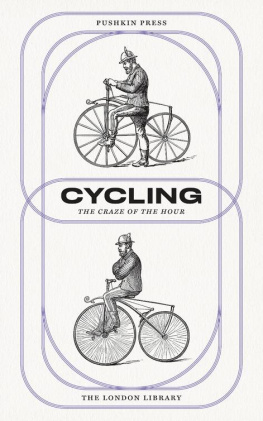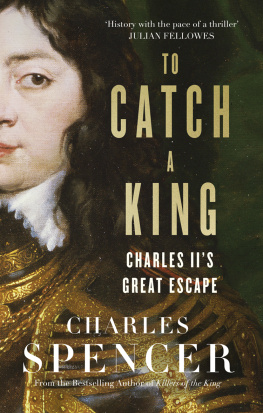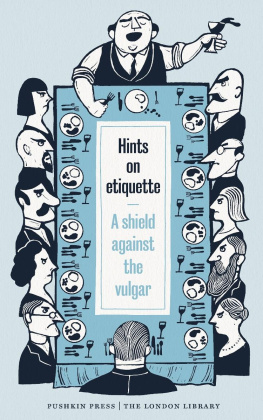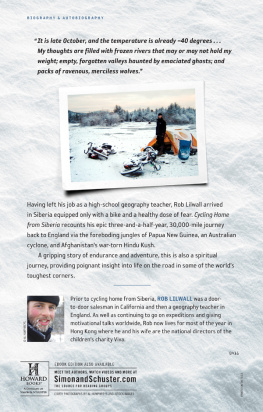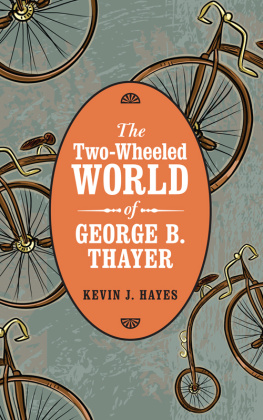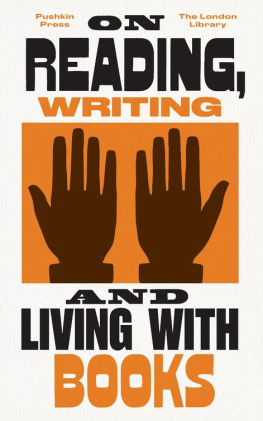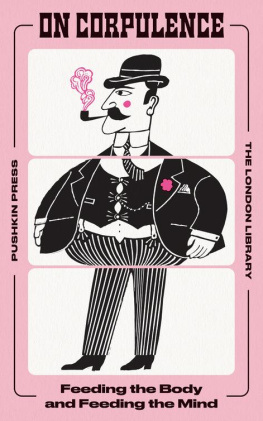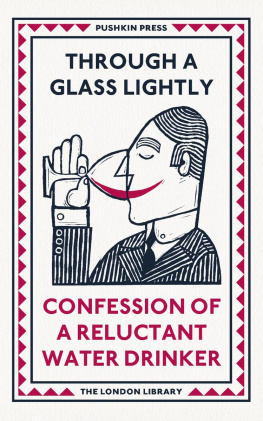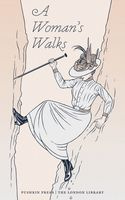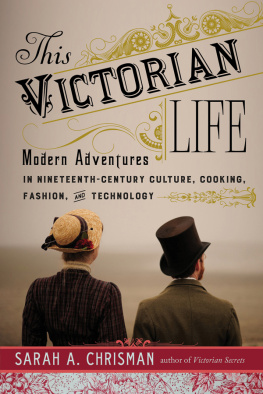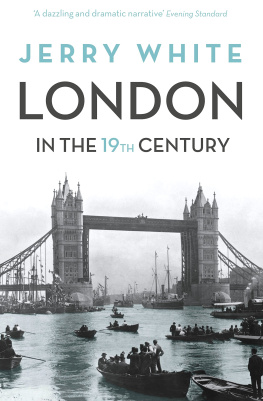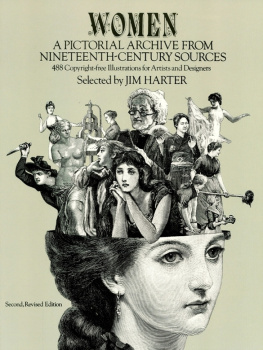The first bicycle was invented at the beginning of the nineteenth century, but it wasnt until the 1890s that the craze really took off. This brought with it the fears, scaremongering, worries and uncertainties that inevitably accompany any new fashion. Women (often unchaperoned and oddly dressed) taking to velocipedes; over-exertion; the possibility of heart diseasethese are just some of the fears that haunted the establishment in the late nineteenth century But with it, of course, came the joy and wonder of the easy and agreeable motion of this thoroughly modern means of locomotion.
The books in Found on the Shelves have been chosen to give a fascinating insight into the treasures that can be found while browsing in The London Library. Now celebrating its 175th anniversary, with over seventeen miles of shelving and more than a million books, The London Library has become an unrivalled archive of the modes, manners and thoughts of each generation which has helped to form it.
From essays on dieting in the 1860s to instructions for gentlewomen on trout-fishing, from advice on the ill health caused by the modern craze of bicycling to travelogues from Norway, they are as readable and relevant today as they were more than a century agoeven if the cardiovascular dangers of cycling have now been disproved!
C ONTAINING :
Instructions for Beginners;
Choice of a Machine;
Hints on Training
With Practical Illustrations
BY CHARLES SPENCER, 1877
C HARLES S PENCER owned a shop on Old Street selling equipment for the building of gymnasia. He devoted most of his writing to the subject of cycling, and was heavily involved in the Middlesex Bicycle Club. On 17th February 1869 he rode his bicycle from Trafalgar Square in London to Brighton in just fifteen hours.
Preface
The wonderful transformation undergone by the Bicycle since its introduction, a few years ago, having rendered any previous work upon it quite out of date, I have attempted, in the present, to give a few instructions suited to the new style of machine, and hope they may be useful to our constantly increasing friends, and receive as favourable acceptance as my former little volumes.
2 Old Street, E.C.,
July, 1876.
Introduction
What makes him go sideways? was the question addressed by Mr. Snodgrass to Mr. Winkle on his tall bony steed, in the memorable journey of the immortal quartette to Dingley Dell, described in the Pickwick Papers; and as any one crossing a bicycle for the first time would feel something of Mr. W.s awkwardness, and from exactly the same causewant of skill in ridingI am about to give a few simple instructions for learners, with the view of enabling them to get some command of their iron (or steel) steed at an earlier period than they would be able to do by themselves, as I well remember my own early experiences, and can heartily sympathize with their difficulties.
And as I had the principal share in the first introduction of the bicycle a few years ago, and have kept pace with its various stages of improvement up to the present time, it is easy for me to explain and illustrate the enormous difference between riding the early machines and those of the present day; and the contrast between them is really so marked that it is visible to the most ordinary observer. It is difficult to realize the fact that the low clumsy affairs first introduced have developed into the light and graceful machines of the present day. But the simple fact is, that if the present style of bicycle had been brought forward in the first instance, its form would actually have hindered and stood in the way of its own success, as it would have been impossible for any one to have learned upon it, and in consequence it is probable not one in a hundred of our present numerous riders would have been able to master it.
And although I must certainly plead guilty to being agreeably surprised at the wonderful improvement in the bicycle itself, I must claim to have always recognized its capability, and to have had a firm belief in the steady increase in the number of riders. And as it has now gone successfully through the various stages of being laughed at as a toy, and tolerated as an amusement, so I am firmly of the opinion that it will eventually become generally useful as a means of locomotion.
And as we have various kinds of riding-horses for different purposes, from the roadster to the race-horse, so we have naturally machines of different construction, adapted to the use they are intended for. And here let me make a remark about bicycle racing. It is sometimes asked, what is the good of riding at full speed round and round a smooth and level cinder path, when the true use is to travel along turnpike and other roadsgood, bad, and indifferent? But, as the race-horse is the highest development of that noble animal, so the racing bicycle is the best form of machine for speed which is the primary object in each case; and, of course, it is highly interesting to know the greatest distance that can be run in a given time. And we should no more think of habitually careering along a heavy turnpike road on a racing machine than on a veritable race-horse.
There is no necessity for me to go into a detailed account of the various stages of improvement which the bicycle has gone through, or to give an elaborate description of the first hobby-horses, tricycles, &c., &c., or a long and tedious narrative telling who enlarged the fore wheel and diminished the hind one, or to whom we are indebted for steel spider-wheels and india-rubber tyres. This has been done at length by some writers, and any one who wishes can find out these particulars for himself. We have to do with the machine as it is now; and my object is to produce a small handy volume, which may be easily carried in the pocket, containing a few plain instructions for learners and as to the choice of a bicycle, a few hints on trainingnot special, but suitable for general adaptationand a comprehensive road book, as the true use of the machine is for travelling far and wide through the country.
And here I may remark that, whereas it was formerly looked upon as a great achievement to run to Brighton in a day, it is now thought nothing very extraordinary to go there and back in the same time.
Lessons in Bicycle-Riding
In the little work I brought out some six or seven years ago (which contained the first instructions for learners ever published), I pointed out the necessity of getting one of the old construction to begin upon; these may be got at a reasonable price, as many have been discarded for the modern ones. They are called practises, or, more familiarly, bone-shakers. In learning to ride, it is advisable to have a competent teacher, who can not only show what is wanted, but can also put the beginner in the way of doing it himself; but as many may be unable, from distance or other causes, to avail themselves of this kind of assistance, the following instructions are intended for those who are thus thrown upon their own resources. Of course it is necessary to have recourse to a friendly arm, and there may be many cases in which two friends are desirous to learn the bicycle, and can give mutual help.
In the early illustrations, it will be seen that the bicycle is of this construction, that is, of moderate height and the most solid build, and altogether very different from its latest development, as shown in the later sketches, with its enormous driving-wheel and general lightness of make. These machines, with comparatively little difference in the height of the wheel, are best for beginners, as, being

